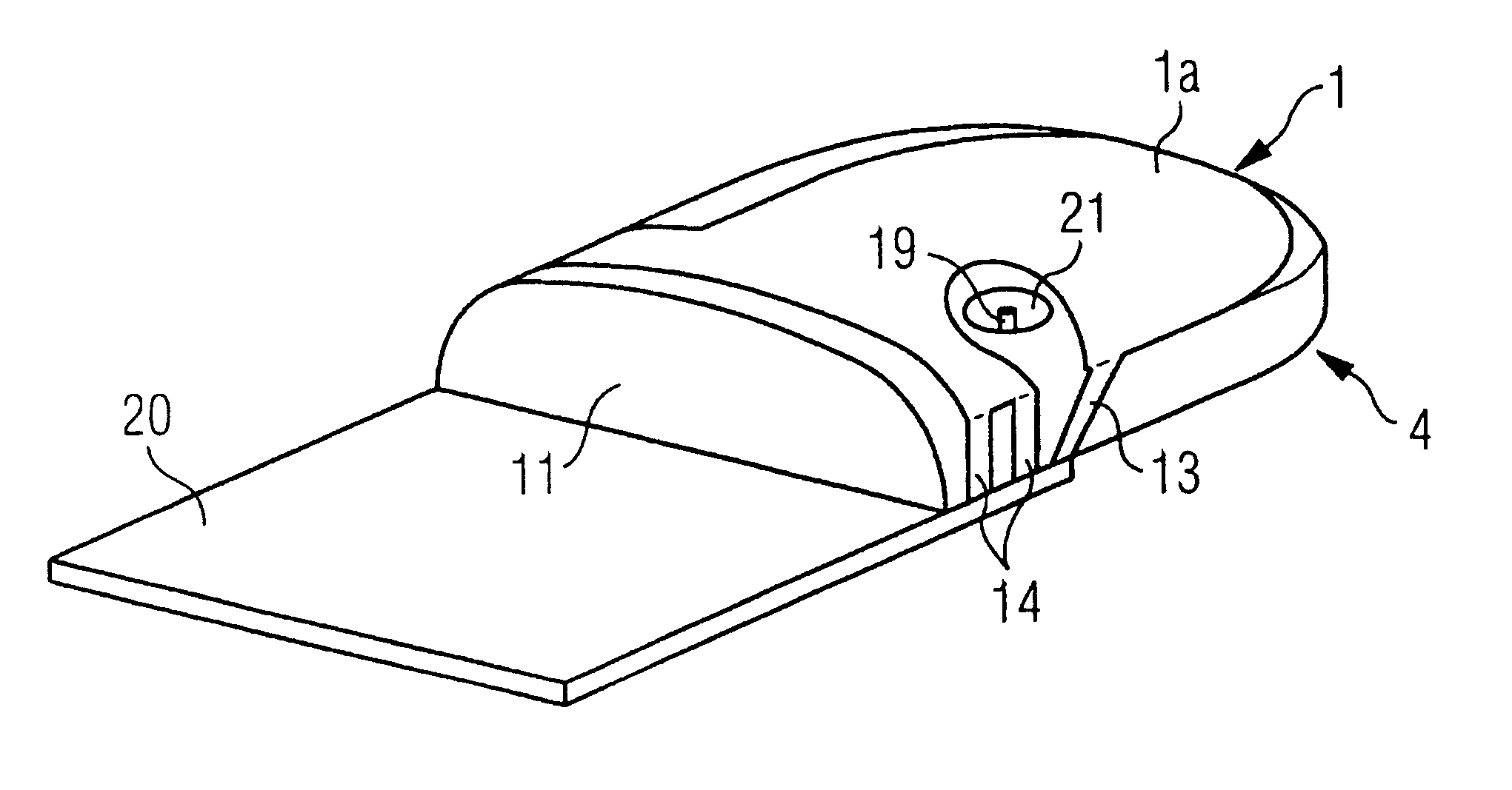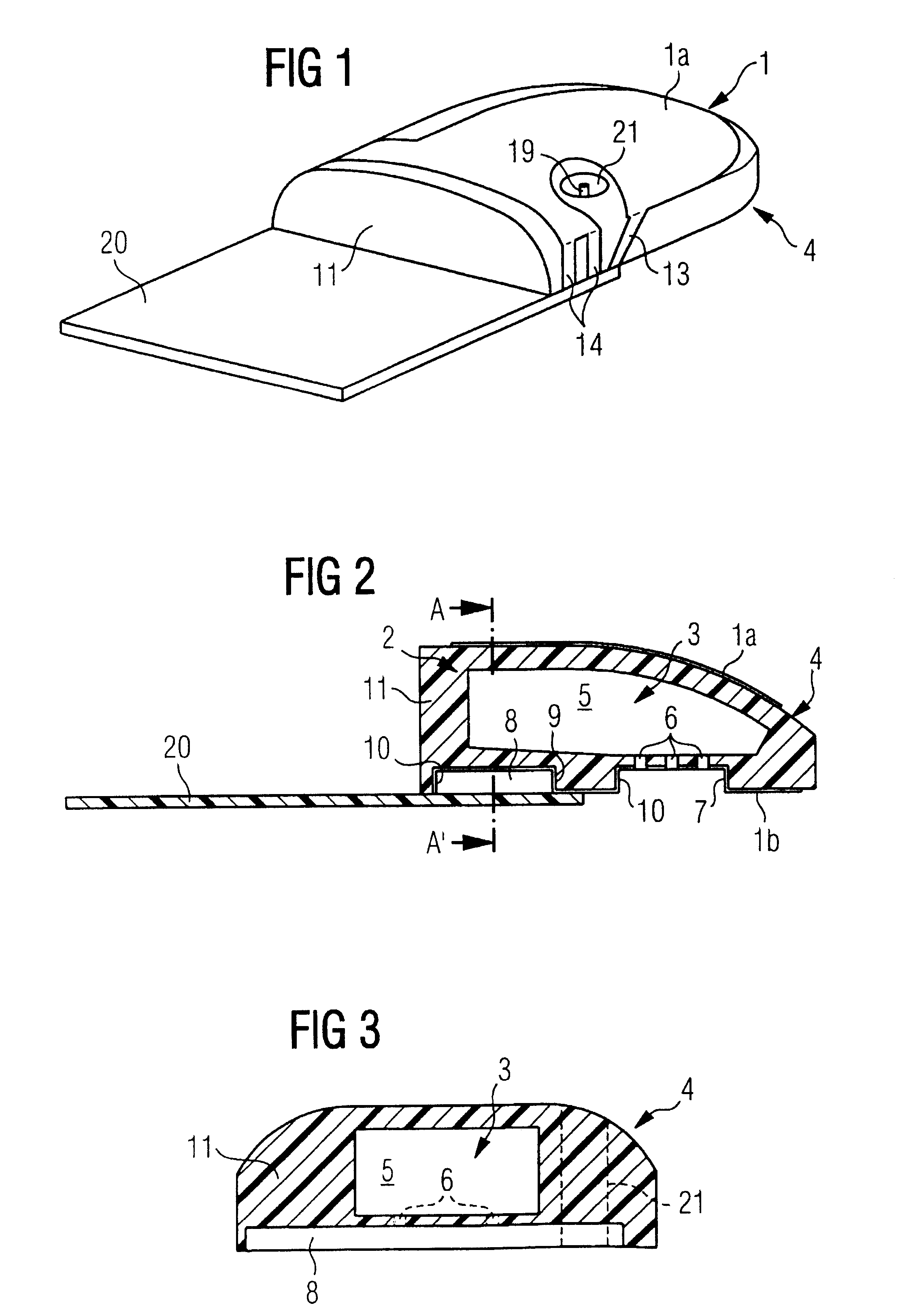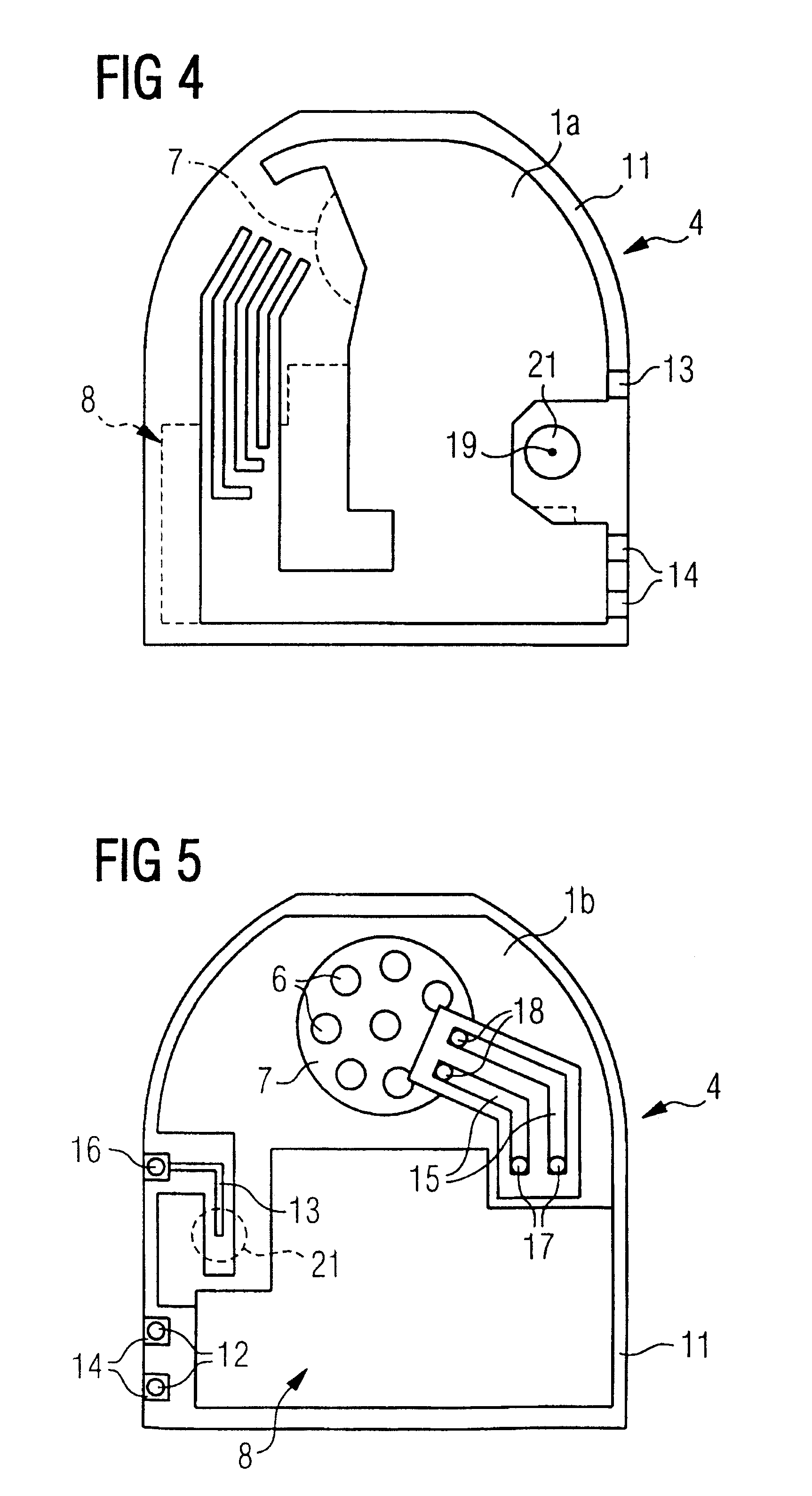Communications terminal
- Summary
- Abstract
- Description
- Claims
- Application Information
AI Technical Summary
Benefits of technology
Problems solved by technology
Method used
Image
Examples
Embodiment Construction
[0018]The figures show an antenna module for a communications terminal according to the present invention; specifically, a mobile phone. This module has an antenna support 4 which is basically formed as a non-conducting plastic body 11. This antenna support 4 is coated on two opposite surfaces with specially patterned conducting areas 1a, 1b forming a two-piece antenna element 1. The antenna volume extends between the conducting areas 1a, 1b. This antenna module is placed in suitable contact with a printed circuit board 20 of the mobile phone at the intended position in the mobile phone.
[0019]The design and shape of the antenna module are described in detail below.
[0020]The plastic body 11 forming the antenna support 4 consists of two joined half-shells, which thereby create a cavity 5 inside the plastic body 11. For good sound quality, the resonant cavity 3 should have a maximum volume. The cavity 5 is therefore chosen to be as large as possible, while taking care that the remainin...
PUM
 Login to View More
Login to View More Abstract
Description
Claims
Application Information
 Login to View More
Login to View More - R&D
- Intellectual Property
- Life Sciences
- Materials
- Tech Scout
- Unparalleled Data Quality
- Higher Quality Content
- 60% Fewer Hallucinations
Browse by: Latest US Patents, China's latest patents, Technical Efficacy Thesaurus, Application Domain, Technology Topic, Popular Technical Reports.
© 2025 PatSnap. All rights reserved.Legal|Privacy policy|Modern Slavery Act Transparency Statement|Sitemap|About US| Contact US: help@patsnap.com



